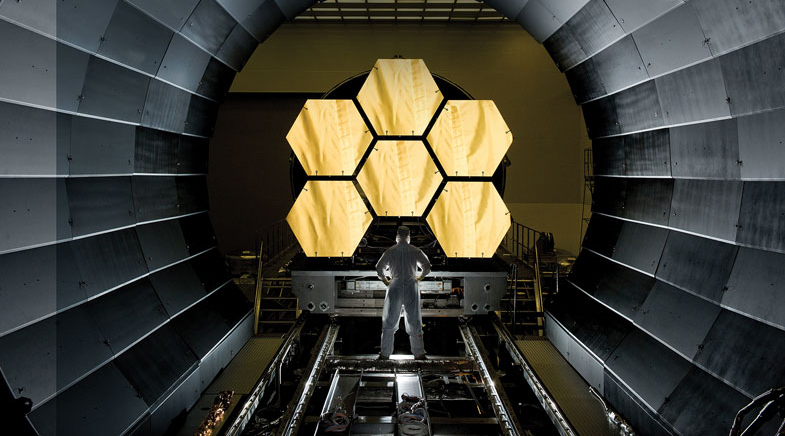James Webb telescope's million-mile journey
-
- from Shaastra :: vol 01 issue 01 :: Jan - Feb 2022

The world's most powerful telescope will capture a period of cosmic history, explore distant galaxies and look for life in other solar systems.
Astrophysicist John Mather put it in a nutshell: the James Webb Space Telescope (JWST) can see the heat signature of a bumblebee at the distance of the Moon from the Earth.
Mather is the co-founder of the JWST, a landmark mission that is expected to shed light on the origins of the universe. The telescope's sensitivity will enable it to detect the faintest of glows emitted by galaxies and stars that came up billions of years ago. With the long-delayed launch, scheduled for late December 2021, the mission promises to initiate a new era in humankind's exploration and understanding of the universe.
The telescope, which is often called Webb, is a marvel of engineering design. It has ambitious scientific objectives and carries with it huge expectations from the astronomy community. An international collaboration between the U.S.-based National Aeronautics and Space Administration (NASA), the European Space Agency and the Canadian Space Agency, it will be operated by the Space Telescope Science Institute, which also runs the Hubble mission. Built at an estimated cost of $9.7 billion, it costs nine times more than what was originally estimated, and the launch comes almost a decade after its first scheduled launch date.
PAST ISSUES - Free to Read


Have a
story idea?
Tell us.
Do you have a recent research paper or an idea for a science/technology-themed article that you'd like to tell us about?
GET IN TOUCH














